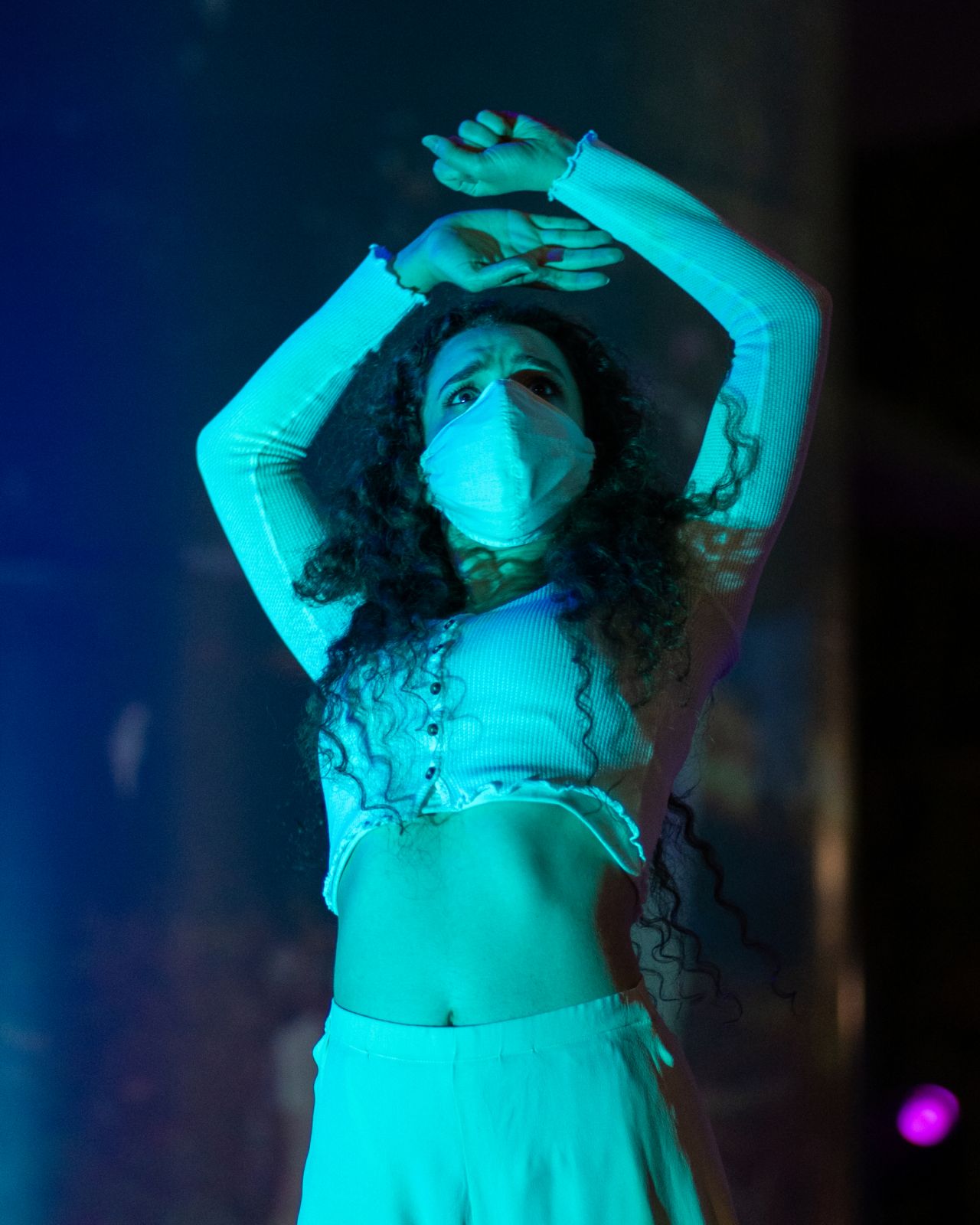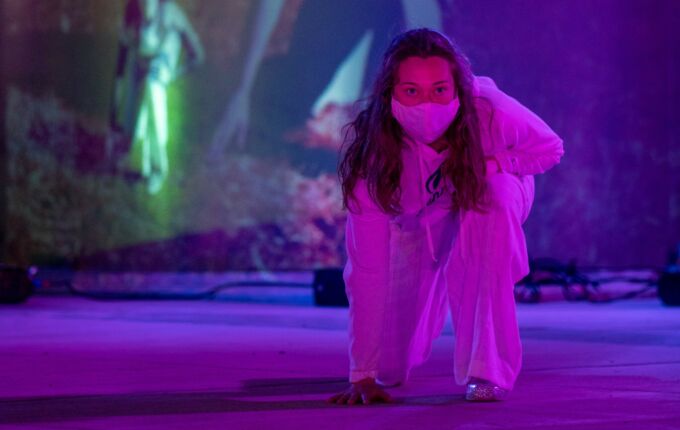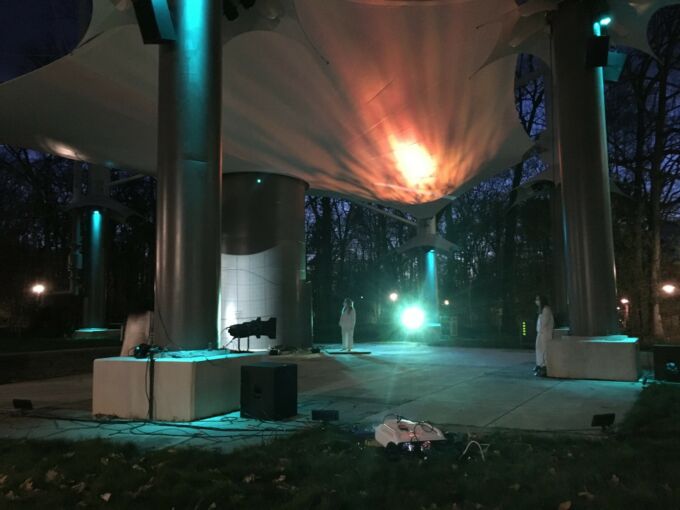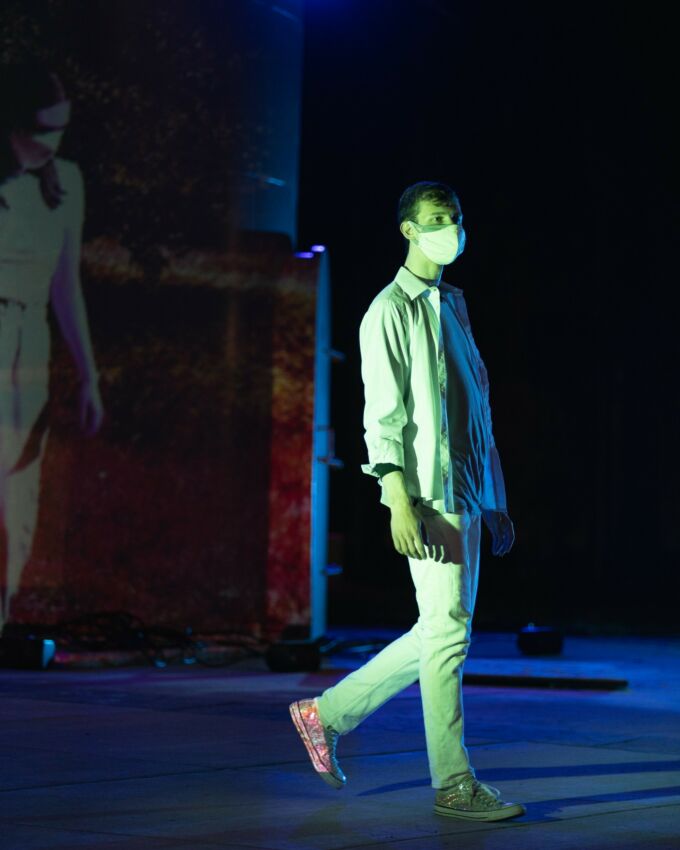April 21, 2021
Virtual spring dance concert invites audience to reflect on power of dance

Whether on Zoom, in a large studio or outside on the HUB-Robeson Center lawn, Penn State dance students have found a way to continue to move and express themselves, despite the restrictions and challenges presented by the COVID-19 pandemic. They will showcase this year’s work in a virtual spring dance concert, “Moving Forward,” premiering at 7:30 p.m. EDT Friday, April 30, at Penn State Centre Stage Virtual. The concert will feature choreography by faculty members Michele Dunleavy, A. Kikora Franklin, Tyler McKenzie and Rebecca Maciejczyk, with pieces performed in the Theatre Building lobby and at the Barbara O. and James R. Korner Water Tower Terrace.
In connection with the dance concert, Penn State Centre Stage Virtual will host a multi-day screening opportunity for the “Eye on Dance” 40th anniversary special, which originally aired in March. The series, created and produced by Jeff Bush and Celia Ipoitis, aired weekly on PBS from 1981 to 2004, and was the only show dedicated to stories about dance, as told by dancers themselves from around the world. The special will be available to be viewed beginning April 30 at sites.psu.edu/pscsvirtual.
According to Dunleavy, who has been teaching dance at Penn State since 2004, the “Eye on Dance” special shows that dancers and choreographers today are discussing many of the same issues they addressed in the ‘80s and ‘90s, including gender, race, body type and body image.
“We as choreographers today are dealing with similar topics in our work, with a contemporary sensibility,” said Dunleavy, who teaches tap, jazz and modern dance. “[The special] shows how politics are infused in dance, and how in some ways dance can transcend other forms of expression that rely on verbal communication.”
[embed]https://youtu.be/QV4Gr91ApRM[/embed]
The “Eye on Dance” special gave Dunleavy and fellow dance faculty member Kikora Franklin, who has been teaching at Penn State since 2003, an opportunity to reflect on how dance instruction has evolved at Penn State, and how dance has always served as a powerful tool for expression.
“Dance has given human beings a way to express themselves creatively, to communicate meaning. It has been a powerful tool of refuge, joy and shared lived experience,” said Franklin, who teaches courses in African dance and dance history.
Tying in with students the history of dance—the connecting idea is that dance as art and as expression has linked us through time and space.” -Kikora FranklinAccording to dance student Hannah Eaken, a junior majoring in theatre studies, dance provides an emotional release that she has not found in other art forms. “Dance exists in so many different styles and genres, and each one has its own unique storytelling abilities, whether it be contemporary, jazz or even something more rhythmic, like tap,” she said. “Dance provides a powerful outlet to not only release energy physically but also tell a story at the same time. The events of the past year have led both Dunleavy and Franklin to not only adapt how they physically teach dance, but to more closely examine how current events tie into their instruction and discussions. For Franklin, the storytelling component is important, especially when teaching the history of dance, which is now a core component of the dance curriculum. “I took a bold approach in discussing these ‘dual pandemics’—COVID-19 and racial injustice,” said Franklin. “George Floyd’s murder really brought home the need for that to be part of our work.” While the past year has been challenging, the dance faculty have learned lessons they will incorporate into their teaching in the future, about flexibility, empathy and persistence. “I used to lean more into rigor, and I am working on having empathy lead,” said Dunleavy.
I ask myself: Am I doing the best for each individual student? Am I addressing their needs while still teaching class as a group?” -Michele DunleavyDunleavy’s students said they appreciate her empathy and her encouragement of creative freedom. “Michele has given us all a space to own our truths, physicalize completely different interpretations of a concept and share those different perspectives. Because of this, my entire view on dance and its meaning has changed,” said Teagan Reynolds, a second-year musical theatre student who will perform remotely in the spring concert from her home in California. “This doesn’t just feel like a group of performers—it feels like a real, live, breathing community of people—and I am excited to see how the audience will receive it.” Photos of dancers Melody Munitz and David Reingold (Teagan Reynolds on screen) by Joe Dowd, B.F.A. technical directing student. Water tower photos, featuring Hannah Eaken, by Michele Dunleavy. Video by Abby Tarpey.




